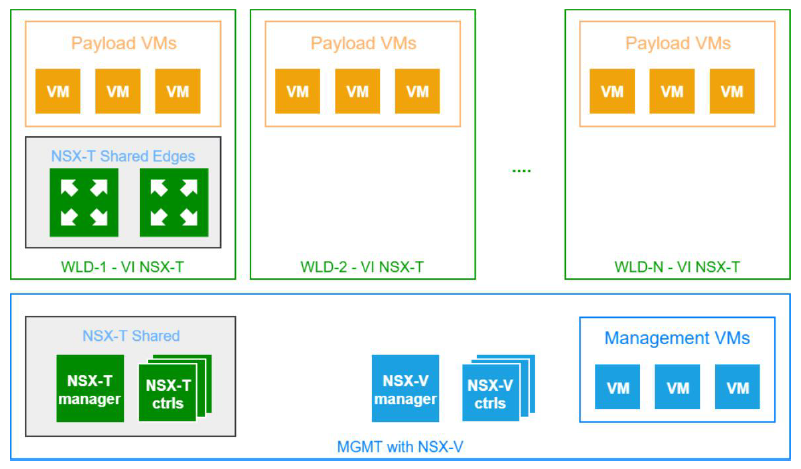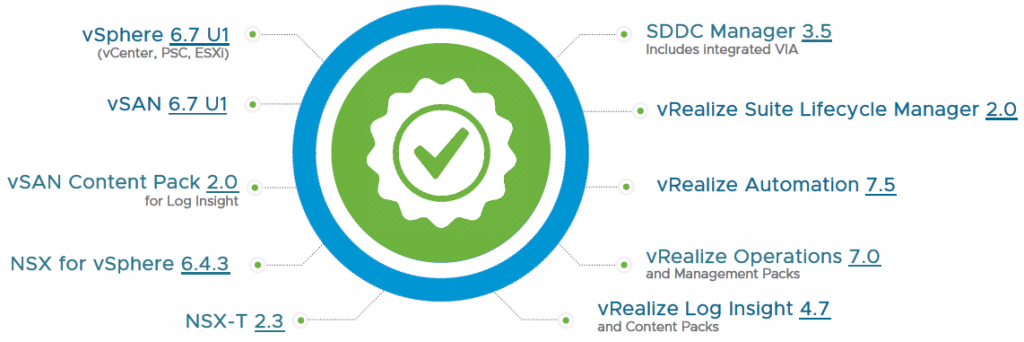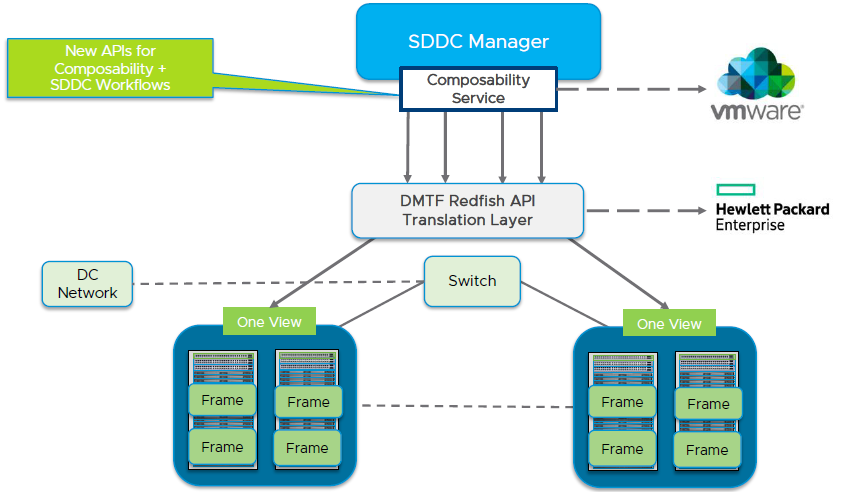VMware Cloud Foundation (VCF) is VMware’s unified SDDC platform for the hybrid cloud and it’s based on VMware’s compute, storage, and network virtualization technologies to deliver a native integrated software stack that can be used on-premises for private cloud deployment or run as a service from the public cloud with consistent and simple operations.
The core components of VMware Cloud Foundation are VMware vSphere, vSAN (for the storage part), and NSX (for the network and security part).
It’s more than a simple products bundle, because it gives a full validate stack with a fast provisioning, but also a better lifecycle management.
VMware Cloud Foundation comes also with VMware SDDC Manager that automates the entire system life cycle and simplifies software operations for the entire stack. With the new version, the SDDC Manager can now automate the deployment, configuration and ongoing lifecycle of a complete software defined data center – to include not only the compute virtualization, storage virtualization, network virtualization but also the entire cloud management part.
And it’s evolving fast: one year ago there was VMware Cloud Foundation 2.3, some months ago the Cloud Foundation 3.0, and now VMware is announcing the Cloud Foundation 3.5 release.
The Bill of Materials become come rich compared to the Cloud Foundation 3.0 one, and now it’s updated to latest VMware’s products versions:
Note that now there are more flexible deployment options, including:
- NSX-T Workload Domains and not only NSX-v Workload Domains
- NFS Workload Domains
- Composable Infrastructure Support
NSX-T 2.3 it’s fully supported and it’s probably another step to moving as the preferred NSX platform. For now, it can coexist with NSX-v, of course in different Workload Domains:
 Note that there is a single NSX-T (and a single NSX-V) shared infrastructure, that include the manager and the controllers.
Note that there is a single NSX-T (and a single NSX-V) shared infrastructure, that include the manager and the controllers.
About the NFS Workload Domain support, this gives the ability to create workload domains using NFS 3.0 based storage, and they can coexist with other vSAN workload domains, or also be the only storage solution.
This seems very interesting, but wasn’t better open directly to vVOLs Workload Domains to be more general? Of course, add an automation for NFS it’s much easier than add it for a block-based storage, but using vVOLs this gap was null and maybe more much oriented to an SDDC approach.
And what is a Composable Infrastructure? Basically, it’s a partner agnostic architecture and design from VCF perspective.
Is an addition the Converged and Hyperconverged architectures and models:
- Converged: it’s a preconfigured package of software and hardware in a single unit, designed for a specific application or workload.
- Hyperconverged: it adds deeper levels of abstraction and greater levels of automation for easy-to-consume infrastructure capacity. Software-defined elements are implemented virtually, with integration into the hypervisor environment.
- Composable: it’s a fluid pool of computing, storage and network resources with a simplified platform management were resources can be provisioned and reconfigured on demand.
VFC was usually an hyperconverged architecture, but now there is a new option.
A VFC composable infrastructure is a brand new composability service developed against the Redfish framework to provide a standard and centralized management interterface:
Note that HPE Synergy is the first certified partner.
Note also that recently the VCF 3.01 architecture has been extended to support also vSAN stretched cluster to provide more deployment flexibility. Customers can use official manual guidance to support vSAN stretched Clusters.
For more information on VCF 3.5 see also:





